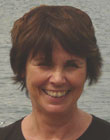John Rose
In the year 1789, John Rose, arriving from we know not where, is recorded as having become the tenant of Lord Walpole for an annual rent of £303 of the largest farm and its “Red House” of the village of North Barsham in the county of Norfolk.
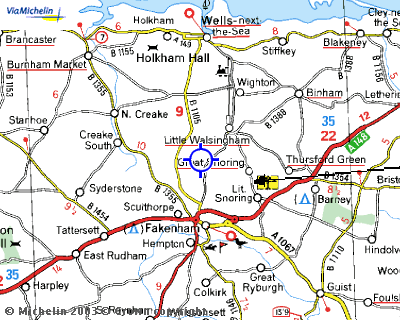
North Barsham
At the time of
his arrival at North Barsham, John Rose already had a wife Bridget Temple
by whom he had eight children before she died in 1804 aged only 35.
Among those children Edward Rose (born in 1794) was the captain and owner of a 500-ton armed sailing vessel which carried troops, passengers and goods between India and the port of London. The boat was called the “John Fleming”, who seems to have been a family friend and possibly the financier as the boat was mortgaged. Edward died at sea off Bombay where he was buried in 1845. He left a wife and one or more children of whom all trace has been lost.
In 1811, John Rose remarried to Mary King , who gave him another five children. It is the third one Henry Edward Rose (born August 27, 1815) who settled in Smyrna.
Among those children Edward Rose (born in 1794) was the captain and owner of a 500-ton armed sailing vessel which carried troops, passengers and goods between India and the port of London. The boat was called the “John Fleming”, who seems to have been a family friend and possibly the financier as the boat was mortgaged. Edward died at sea off Bombay where he was buried in 1845. He left a wife and one or more children of whom all trace has been lost.
In 1811, John Rose remarried to Mary King , who gave him another five children. It is the third one Henry Edward Rose (born August 27, 1815) who settled in Smyrna.
John
died in North Barsham on May 31st, 1842, shortly after the birth at
North Barsham on January 23rd, 1842 of William Edward Rose, his grandson
and Henry Edward’s son.
Old John had obviously been a respected personage. While still farming, he was for some years the Assessor and Collector of Land Taxes in his area. At his death, his widow, Mary moved to a nearby village for her remaining years. Two of her daughters married brothers called Coker of Walsingham of who there is now no trace.
Henry Edward Rose (1815-1872)
Henry Edward Rose is shown in Norfolk records as a farmer and at other times as a solicitor. It is in this profession that we first hear of him in Smyrna (Turkey)
Before leaving England he had married Susannah Woods to whom was born at the Red House in January 1842, as stated above, William Edward Rose.
North Barsham parish records the birth of another son John Henry Rose in April 1843 who died in Smyrna in 1872, aged 29 and is buried in the cemetery of Buca.
Old John had obviously been a respected personage. While still farming, he was for some years the Assessor and Collector of Land Taxes in his area. At his death, his widow, Mary moved to a nearby village for her remaining years. Two of her daughters married brothers called Coker of Walsingham of who there is now no trace.
Henry Edward Rose (1815-1872)
Henry Edward Rose is shown in Norfolk records as a farmer and at other times as a solicitor. It is in this profession that we first hear of him in Smyrna (Turkey)
Before leaving England he had married Susannah Woods to whom was born at the Red House in January 1842, as stated above, William Edward Rose.
North Barsham parish records the birth of another son John Henry Rose in April 1843 who died in Smyrna in 1872, aged 29 and is buried in the cemetery of Buca.

Henry
went to Turkey to practice as a lawyer in the British Consular court
of Smyrna. The income of this was probably insufficient to keep a large
family, so in 1863 he applied for and obtained the agency of the Sun
Insurance Company of London.
The following is an extract from a printed document on the Sun Insurance company
“The Sun Fire Office received an application for an agency at Smyrna in February 1863 from Henry Edward Rose who was practicing as a solicitor there and supplied copious information about the port and its environs. It was the “chief Emporium for Western Asia having a very considerable trade” with Great Britain, Austria, France and the United States in silk, cotton, wool, fruit and drugs. The city itself was divided into four “quarters” Frankish (European), Armenian, Jewish and Turkish; the population was about 150.000 of whom 80.000 were Turks and 40.000 Greeks. The Jews were “employed as a medium of commerce between Europeans and Natives”. Europeans were legally subject to their consular courts not to the Turkish authorities.
“Risks needed careful consideration for many were of poor (wooden, lath and plaster etc…) construction, but there were also solid houses, warehouses, stores and factories to insure, which offered a sound business. Cover might also be provided on “Goods from the Interior” against which he explained middlemen had sometimes refused to make advances because no fire insurance could be obtained for them.”
“Having cleared up some doubts about Rose himself (he was not, it transpired, a properly enrolled solicitor, but the consular court at Smyrna nevertheless allowed him to practices as if he were) the Sun decided to appoint him as its agent, carefully instructing him to limit insurances to particular classes of property in the Frankish quarter of the port.”
“The risks accepted in the next few years included the harbour warehouses and their contents, the Managers even agreeing to short-term insurances on warehoused goods without inspection if the policies were taken out to cover advances by the Imperial Ottoman Bank, a valued client and the Office’s local banker.”
The following is an extract from a printed document on the Sun Insurance company
“The Sun Fire Office received an application for an agency at Smyrna in February 1863 from Henry Edward Rose who was practicing as a solicitor there and supplied copious information about the port and its environs. It was the “chief Emporium for Western Asia having a very considerable trade” with Great Britain, Austria, France and the United States in silk, cotton, wool, fruit and drugs. The city itself was divided into four “quarters” Frankish (European), Armenian, Jewish and Turkish; the population was about 150.000 of whom 80.000 were Turks and 40.000 Greeks. The Jews were “employed as a medium of commerce between Europeans and Natives”. Europeans were legally subject to their consular courts not to the Turkish authorities.
“Risks needed careful consideration for many were of poor (wooden, lath and plaster etc…) construction, but there were also solid houses, warehouses, stores and factories to insure, which offered a sound business. Cover might also be provided on “Goods from the Interior” against which he explained middlemen had sometimes refused to make advances because no fire insurance could be obtained for them.”
“Having cleared up some doubts about Rose himself (he was not, it transpired, a properly enrolled solicitor, but the consular court at Smyrna nevertheless allowed him to practices as if he were) the Sun decided to appoint him as its agent, carefully instructing him to limit insurances to particular classes of property in the Frankish quarter of the port.”
“The risks accepted in the next few years included the harbour warehouses and their contents, the Managers even agreeing to short-term insurances on warehoused goods without inspection if the policies were taken out to cover advances by the Imperial Ottoman Bank, a valued client and the Office’s local banker.”
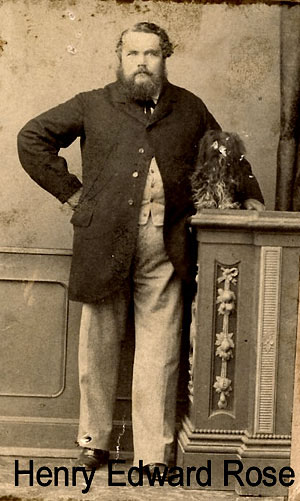 |
“Some
silk factories were also taken though cotton gins were declined. A risk
which gave rise to much discussion was the so called ‘Frenkhanes’
a combined warehouse and living quarter off Frank street near the English
Quay which had been built by the Dutch consul in the days of the old
Dutch Levant Company and was an important centre for the storage of
goods.”
“Local precautions against fire for these and other risks were spectacular and noisy rather than effective. When a fire did break out the church bells were rung backwards, pistols were fired in all directions and the Turkish authorities sent soldiers and sailors to help fight the blaze. Despite this activity, however, there was a great want of organisation at Fires and much brutal obstinacy exhibited by the Local Native authorities, and to help matters the Sun dispatched a fire-engine formerly used by the agent at Barbados to Smyrna, while Henry Rose himself began to organize a volunteer brigade there from his clerks, with some native assistants.
In 1870, he wrote asking for uniforms explaining that other companies’ brigades had them and that his own men who had none had been roughly handled on several occasions by the Turkish authorities.”
“During the three decades after the Rose’s appointment the Sun’s Turkish business grew fairly steadily. In 1867 the Office appointed an agent at Constantinople and by the early eighties there were others at Cyprus, Beirut, Jerusalem, Alexandria and Port Said.”
“Rose had meanwhile (1868) been given permission to accept insurances and appoint sub-agents at Adalia, Mersina, Rhodes, Samos and Salonika. In 1882 the three most important of these agencies Constantinople, Smyrna and Alexandria returned between them premiums of £14.000.”
“By this date the number of insurance Offices represented in Smyrna had greatly increased. In 1872 there were only six agents of British companies there, headed by the Sun and the Royal with between them did 75 per cent of all insurance business in the port. By 1881 there were sixteen British and six foreign Offices and there was brisk competition between them, though the Germans had already washed their hands of what one of their newspaper described as ‘this risky business”
“In the sixties there had been constant dispute between the Smyrna agents and familiar accusations about cutting rates and under-selling. The Fire Offices in London tried to impose order by drafting successive tariffs for risks in the port and from the mid seventies the agents of the British Offices were holding regular meetings to interpret them, though it was not until 1887 that they established a permanent “Tariff Interpretation Committee”.
“They had already come together in 1874, at the instance of the Sun’s and Royal’s agents, to form a joint fire-brigade in place of the separate ones they had previously maintained and in the following year appointed Michel Ghericcich ‘described as a Shipwright and Sailor’ to be chief of the new corps at a salary of £120 ; the cost of the Brigade was borne in proportion to the Offices’ insurance business and a standing committee of agents was set up to supervise its activities. The general nature of property in the port also improved during the seventies with extensive rebuilding in the town and the construction of an efficient dock system, improvements which were said in 1879 to make the passage from Constantinople to Smyrna a journey ‘from barbarism into civilization’.”
“Local precautions against fire for these and other risks were spectacular and noisy rather than effective. When a fire did break out the church bells were rung backwards, pistols were fired in all directions and the Turkish authorities sent soldiers and sailors to help fight the blaze. Despite this activity, however, there was a great want of organisation at Fires and much brutal obstinacy exhibited by the Local Native authorities, and to help matters the Sun dispatched a fire-engine formerly used by the agent at Barbados to Smyrna, while Henry Rose himself began to organize a volunteer brigade there from his clerks, with some native assistants.
In 1870, he wrote asking for uniforms explaining that other companies’ brigades had them and that his own men who had none had been roughly handled on several occasions by the Turkish authorities.”
“During the three decades after the Rose’s appointment the Sun’s Turkish business grew fairly steadily. In 1867 the Office appointed an agent at Constantinople and by the early eighties there were others at Cyprus, Beirut, Jerusalem, Alexandria and Port Said.”
“Rose had meanwhile (1868) been given permission to accept insurances and appoint sub-agents at Adalia, Mersina, Rhodes, Samos and Salonika. In 1882 the three most important of these agencies Constantinople, Smyrna and Alexandria returned between them premiums of £14.000.”
“By this date the number of insurance Offices represented in Smyrna had greatly increased. In 1872 there were only six agents of British companies there, headed by the Sun and the Royal with between them did 75 per cent of all insurance business in the port. By 1881 there were sixteen British and six foreign Offices and there was brisk competition between them, though the Germans had already washed their hands of what one of their newspaper described as ‘this risky business”
“In the sixties there had been constant dispute between the Smyrna agents and familiar accusations about cutting rates and under-selling. The Fire Offices in London tried to impose order by drafting successive tariffs for risks in the port and from the mid seventies the agents of the British Offices were holding regular meetings to interpret them, though it was not until 1887 that they established a permanent “Tariff Interpretation Committee”.
“They had already come together in 1874, at the instance of the Sun’s and Royal’s agents, to form a joint fire-brigade in place of the separate ones they had previously maintained and in the following year appointed Michel Ghericcich ‘described as a Shipwright and Sailor’ to be chief of the new corps at a salary of £120 ; the cost of the Brigade was borne in proportion to the Offices’ insurance business and a standing committee of agents was set up to supervise its activities. The general nature of property in the port also improved during the seventies with extensive rebuilding in the town and the construction of an efficient dock system, improvements which were said in 1879 to make the passage from Constantinople to Smyrna a journey ‘from barbarism into civilization’.”
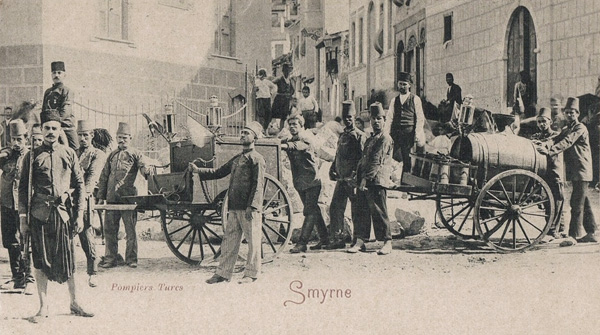 |
“Henry Edward
Rose died in August 1872, and G.S. Manvell, sent out to Smyrna to choose
his successor recommended Rose’s son William Edward.”
“Manvell found that Henry Edward had been a good businessman and extremely popular ; the attendance at his funeral was almost unprecedented. But though he had done a good deal to push the Sun’s business, he had managed his own affairs carelessly and had left nothing for his dependants. The Sun Fire Office it appeared was his ruling idea, carrying him to such a length as to have studs and sleeve buttons made with the Sun emblem upon them. After his death a large watch which he had ordered with the Sun engraved on it and costing £90 had arrived from London and was promptly sent back by his indignant family.”
“Manvell also found that the agent’s religion affected business in a quite practical way; because Rose was a Protestant, local Protestants insured with the Sun; Catholics on the other hand went to the Royal whose representative was a member of their own faith.”
“Manvell found that Henry Edward had been a good businessman and extremely popular ; the attendance at his funeral was almost unprecedented. But though he had done a good deal to push the Sun’s business, he had managed his own affairs carelessly and had left nothing for his dependants. The Sun Fire Office it appeared was his ruling idea, carrying him to such a length as to have studs and sleeve buttons made with the Sun emblem upon them. After his death a large watch which he had ordered with the Sun engraved on it and costing £90 had arrived from London and was promptly sent back by his indignant family.”
“Manvell also found that the agent’s religion affected business in a quite practical way; because Rose was a Protestant, local Protestants insured with the Sun; Catholics on the other hand went to the Royal whose representative was a member of their own faith.”
William
Edward Rose (1842-1877)
Born in North Barsham (Norfolk), he came to Izmir as a child.
On March 19th, 1868 at the age of 26 he married the catholic Marie Antoinette Philomène Schiffman daughter of Joseph Fortuné Schiffman, an Austrian citizen born in Trieste, who represented in Smyrna the Austrian Lloyd Insurance Company.
Through her mother, Marie Virginie Issaverdens (1826-1897), Marie Schiffmann was related to many of the Levantine families of Smyrna.
During their 8 years of marriage Marie and William will have 5 children :
- Jeanne Marie (1871-1872)
- Anna Evelyne Joséphine (1873-1948)
- Edith Henriette (1875-1923)
- Frederic Edward (1876- after 1948)
- Henry (1877-1877)
William died on January 1877 at the age of 34 and is buried in the Buca cemetery.
The following is an extract from a printed document on the Sun Insurance company:
“William Edward Rose continued to act as an agent until his death in 1877, handling the business competently, though disturbed from time to time by incidents like his clerk Mihière’s embezzlement of £50 which he spent on a French actress.”
Born in North Barsham (Norfolk), he came to Izmir as a child.
On March 19th, 1868 at the age of 26 he married the catholic Marie Antoinette Philomène Schiffman daughter of Joseph Fortuné Schiffman, an Austrian citizen born in Trieste, who represented in Smyrna the Austrian Lloyd Insurance Company.
Through her mother, Marie Virginie Issaverdens (1826-1897), Marie Schiffmann was related to many of the Levantine families of Smyrna.
During their 8 years of marriage Marie and William will have 5 children :
- Jeanne Marie (1871-1872)
- Anna Evelyne Joséphine (1873-1948)
- Edith Henriette (1875-1923)
- Frederic Edward (1876- after 1948)
- Henry (1877-1877)
William died on January 1877 at the age of 34 and is buried in the Buca cemetery.
The following is an extract from a printed document on the Sun Insurance company:
“William Edward Rose continued to act as an agent until his death in 1877, handling the business competently, though disturbed from time to time by incidents like his clerk Mihière’s embezzlement of £50 which he spent on a French actress.”
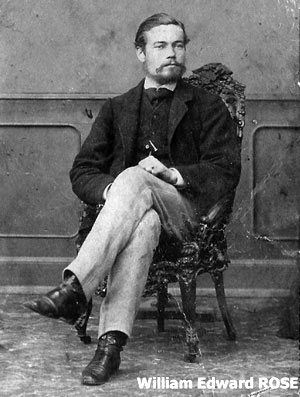 |
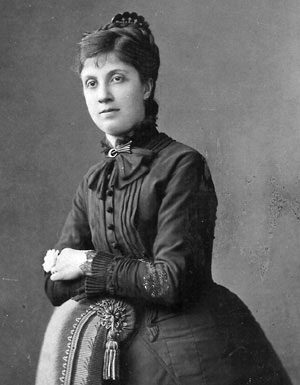 |
“After
William’s death, Richard Rose was appointed in his brother’s place and
in 1899 installed his brother Bolton in Salonica. Richard continued
to act until his death in 1907, when he was succeeded by his relative
Léon Joseph Belhomme, a French citizen who was called up in August 1914 leaving
the agency under the care of Edward Whittall.”
Richard also got into business manufacturing cheap quality soap.
“In 1886 the Smyrna merchant Hadkinson enters into a partnership with the British Whittaker firm. This firm would provide both the land and know how and experience for an olive oil factory. The factory was built and quickly became successful. In 1891 Hadkinson developed ways to extract ‘pirina’ oil from the cake of crushed olives, and became more successful. The ‘pirina’ was used in the manufacture of soap of lesser quality, but cheaper, thus popular. The local Anglo-Levantine R. Rose was the one who bought the ‘pirina’ to make soap, whose lower costs resulted in the bankruptcy of all his rivals within 2 years. But in time, cheaper and better quality soap imported in great volume, from Italy and Britain meant the bankruptcy of Rose.” [Our Izmir] by Melih Gürsoy 1993
Richard died in Smyrna in 1907 at the age of 57.
Richard also got into business manufacturing cheap quality soap.
“In 1886 the Smyrna merchant Hadkinson enters into a partnership with the British Whittaker firm. This firm would provide both the land and know how and experience for an olive oil factory. The factory was built and quickly became successful. In 1891 Hadkinson developed ways to extract ‘pirina’ oil from the cake of crushed olives, and became more successful. The ‘pirina’ was used in the manufacture of soap of lesser quality, but cheaper, thus popular. The local Anglo-Levantine R. Rose was the one who bought the ‘pirina’ to make soap, whose lower costs resulted in the bankruptcy of all his rivals within 2 years. But in time, cheaper and better quality soap imported in great volume, from Italy and Britain meant the bankruptcy of Rose.” [Our Izmir] by Melih Gürsoy 1993
Richard died in Smyrna in 1907 at the age of 57.
We don’t know much about the other sons of Henry Edward Rose :
- John Henry born in North Barsham in April 1843, died in Smyrna in 1872, at the age of 29, and is buried in Buca
- Edward, born in 1845 (probably in Smyrna) died in 1867 aged only 22.
- Bolton, as we know from above, became the agent of the Sun Insurance Company in Salonica.
As for the daughters :
- Marian, (born in 1845 according to the Buca cemetery records) is probably the daughter of Henry Edward and Susannah Rose but we do not have any document proving this relationship.
Married on March 19th, 1872 to Laurent Eugène Belhomme she gave birth to three children before dying on May 9th, 1878 shortly followed by her 3 children.
- Eugène Henri Belhomme (January 6th 1873 –October 23rd 1879)
- René Joseph Laurent (October 2d 1876 – 1879)
- Christine Rose Marie (1877-1878)
Eugène Belhomme remarried to Marianne Joly on January 30th, 1881 had 4 other daughters: Marie, Marthe, Lucie and Louise.
- Gertrude (born?) was married to Frederic de Cramer on January 26th 1876 in Bournabat, her brother William was her witness, the other witness being Frederic Janet.
Gertrude and Frederic de Cramer had 2 daughters :
- Marguerite de Cramer (born January 4th 1877 in Bournabat) married to Camillo Canaveri on January 10th 1908 in Bournabat.
- Béatrice de Cramer (born July 31st 1878 in Bournabat) married to Léon Joseph Henri (dit Lionel) Belhomme on September 15th 1904. Lionel Belhomme succeeded Richard Rose as the agent of the Sun Insurance Company in 1907 up to 1914.
- Adeline Ida was born in Smyrna on January 25th 1857 and died shortly after in 1859.
- Julie, probably the last child of Henry Edward and Susannah Rose, appears only in the Smyrna register of Baptisms & burials (Ms29744) at the Guildhall library. Her death is registered for the year 1928 at the age of 67.
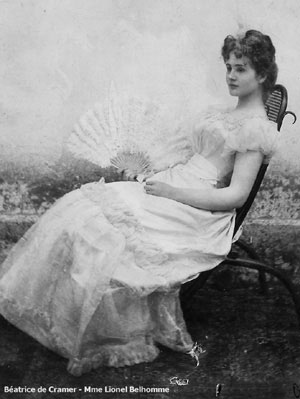 |
William
Edward Rose’s children
Only 3 of his children became adults:
Evelyne Anna Joséphine Rose born September 4th 1873 in Smyrna married Henri d’Andria on april 29th 1909. She gave birth to a daughter Thildette d’Andria on May 18th 1910 in Cordélio (Smyrna).
She died in Istanbul on June 29th, 1948 and is buried in the Catholic cemetery of Fériköy.
Only 3 of his children became adults:
Evelyne Anna Joséphine Rose born September 4th 1873 in Smyrna married Henri d’Andria on april 29th 1909. She gave birth to a daughter Thildette d’Andria on May 18th 1910 in Cordélio (Smyrna).
She died in Istanbul on June 29th, 1948 and is buried in the Catholic cemetery of Fériköy.
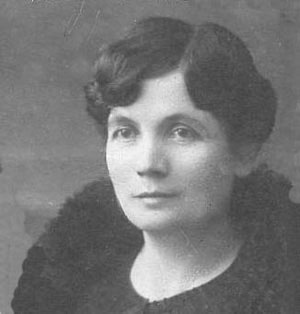 |
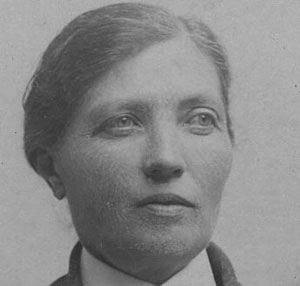 |
She died in France, in Neuilly-sur-seine, on June 2d,1923 and is buried in Paris (cimetière de Clichy).
Married to Anna Toucas he had 3 children: William, Mary and Jocelyne.
For further information please contact the author of this page here: marieannemarandet[at]hotmail.com
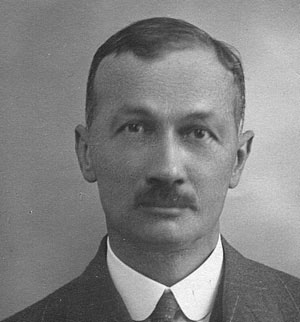 |
Notes:
1- The cemetery in Boudjah (on-line
records) is where some of these people were buried. The
first settler in Smyrna, Henry Edward Rose together with his wife Susannah
are buried there as is their first son William E. (born in North Barsham),
so their move to Smyrna must have been sometime after 1843. Also buried
there are is a daughter who died in infancy, but the obelisk whose different
sides carries different names of family members may have been partly
a symbolic gesture, as the place of death of their 2nd and 3rd sons,
John Henry (1843-1872) and Edward (1845-1867) is given as Bakersfield,
California and Aspinal, Panama respectively (were they gold prospectors?
- locations sort of fit, however the period is a bit late - who died
from diseases that killed these desperados in their thousands). The
fact that the place of death of Henry Edward and William E. is given
as Boudjah proves that at least in the 1870s the family owned a house
in this village.
The cemetery on-line listing also made use of those names listed in a 1928 study and one of the tombs no longer visible (listed in brackets) is that of Marian E. Belhomme, recorded in a 1959 L.A. Missir’s church publication article as the wife of Eugene L. Belhomme. This Marian(ne) is almost certainly the person visible on some other documents in the possession of Ms Marandet, the daughter of Henry Edward Rose and Susannah Woods.
2- To view the outline of the Belhommme family lineage, related to the Rose family through the marriage of Marian, in the Levant click here:
Clearly the Belhomme family had a residence at Cordelio, Smyrna as shown by this archive postcard with the title ‘l’echelle [quayside] Belhomme’.
Lionel Belhomme mentioned above, clearly was an intellectual as he was one of the occasional contributors to the ‘Le Levant’, French language newspaper of Izmir, chiefly writing about the geography and archaeology of the region.
3- A book published in 1985, ‘Phoenix Assurance and the Development of British Insurance - Clive Trebilcock’, records the involvement of the Rose family members as agents in the Turkey, viewable here: on google books.
4- To view the simplified family tree of the ancestors of Marie Anne Marandet, click here:
5- The maternal grandfather of Ms Marandet Henry d’Andria was the High Commissioner in Gallipoli, and he was kept busy as this was one of the stop-over points for the Russian White Army in the early 1920s, and through him she has inherited a series of images showing that port town at the time.
6- In 2009 Ms Marandet together with Catherine Saiko photographed a selection of tombs in the Feriköy Catholic Cemetery of Istanbul, a selection is viewable here:
7- Ms Marandet continues to work on a genealogical database covering most Levantine families of Turkey of the past from these sources:
- The parish registers of Istanbul (Ste Marie Drapéris, St Antoine, St Pierre & St Paul, Cathedrale St Esprit, Yesilköy, Kadiköy, ND de Lourdes de Bomonti, ND de l’Assomption de Yedikule, ND du Rosaire de Bakirköy)
- Registers of St Louis des Français from the Capucin Archives in Paris
- the parish registers of Izmir (St Polycarpe, Ste Marie, ND du Rosaire, Cathedrale St Jean, Ste Hélène de Cordelio, St Antoine de Bayrakli, Ste Marie de Bornova, ND de Lourdes de Göztepe, Vicariat Apostolique d’Izmir)
- the Parish registers of Chios
- the parish registers of Adrianopolis (Edirne) & Rodosto
- A listing found at the Propaganda Fide in Rome, listing all the Catholic families of Smyrna in 1804, with the occupation of the head of the family
- the registers of Feriköy cemetery
- some French consulate registers (from the archives in France)
- the Italian Consulate Registers of Istanbul & Izmir
- the old Sardinian, Napoletano & Tuscan registers of Istanbul
- 2 Sardinian listing of Izmir (1826, 1848) from the archives in Torino
- Documents from the Archives of la Chambre de Commerce de Marseille
- Annuaire Cervati & Annuaire Jacob d’Andria of Smyrna
- Jacques Caporal’s work on the family of Smyrna
- Books such as the one written by Antoine Gautier on the Dragoman. When I find a discrepancy between a book and a register I usually indicate it.
- Private sources from families - I usually indicate the name of the person who gave me the information.
- Internet : Familysearch + Ancestry+….
The cemetery on-line listing also made use of those names listed in a 1928 study and one of the tombs no longer visible (listed in brackets) is that of Marian E. Belhomme, recorded in a 1959 L.A. Missir’s church publication article as the wife of Eugene L. Belhomme. This Marian(ne) is almost certainly the person visible on some other documents in the possession of Ms Marandet, the daughter of Henry Edward Rose and Susannah Woods.
2- To view the outline of the Belhommme family lineage, related to the Rose family through the marriage of Marian, in the Levant click here:
Clearly the Belhomme family had a residence at Cordelio, Smyrna as shown by this archive postcard with the title ‘l’echelle [quayside] Belhomme’.
Lionel Belhomme mentioned above, clearly was an intellectual as he was one of the occasional contributors to the ‘Le Levant’, French language newspaper of Izmir, chiefly writing about the geography and archaeology of the region.
3- A book published in 1985, ‘Phoenix Assurance and the Development of British Insurance - Clive Trebilcock’, records the involvement of the Rose family members as agents in the Turkey, viewable here: on google books.
4- To view the simplified family tree of the ancestors of Marie Anne Marandet, click here:
5- The maternal grandfather of Ms Marandet Henry d’Andria was the High Commissioner in Gallipoli, and he was kept busy as this was one of the stop-over points for the Russian White Army in the early 1920s, and through him she has inherited a series of images showing that port town at the time.
6- In 2009 Ms Marandet together with Catherine Saiko photographed a selection of tombs in the Feriköy Catholic Cemetery of Istanbul, a selection is viewable here:
7- Ms Marandet continues to work on a genealogical database covering most Levantine families of Turkey of the past from these sources:
- The parish registers of Istanbul (Ste Marie Drapéris, St Antoine, St Pierre & St Paul, Cathedrale St Esprit, Yesilköy, Kadiköy, ND de Lourdes de Bomonti, ND de l’Assomption de Yedikule, ND du Rosaire de Bakirköy)
- Registers of St Louis des Français from the Capucin Archives in Paris
- the parish registers of Izmir (St Polycarpe, Ste Marie, ND du Rosaire, Cathedrale St Jean, Ste Hélène de Cordelio, St Antoine de Bayrakli, Ste Marie de Bornova, ND de Lourdes de Göztepe, Vicariat Apostolique d’Izmir)
- the Parish registers of Chios
- the parish registers of Adrianopolis (Edirne) & Rodosto
- A listing found at the Propaganda Fide in Rome, listing all the Catholic families of Smyrna in 1804, with the occupation of the head of the family
- the registers of Feriköy cemetery
- some French consulate registers (from the archives in France)
- the Italian Consulate Registers of Istanbul & Izmir
- the old Sardinian, Napoletano & Tuscan registers of Istanbul
- 2 Sardinian listing of Izmir (1826, 1848) from the archives in Torino
- Documents from the Archives of la Chambre de Commerce de Marseille
- Annuaire Cervati & Annuaire Jacob d’Andria of Smyrna
- Jacques Caporal’s work on the family of Smyrna
- Books such as the one written by Antoine Gautier on the Dragoman. When I find a discrepancy between a book and a register I usually indicate it.
- Private sources from families - I usually indicate the name of the person who gave me the information.
- Internet : Familysearch + Ancestry+….
